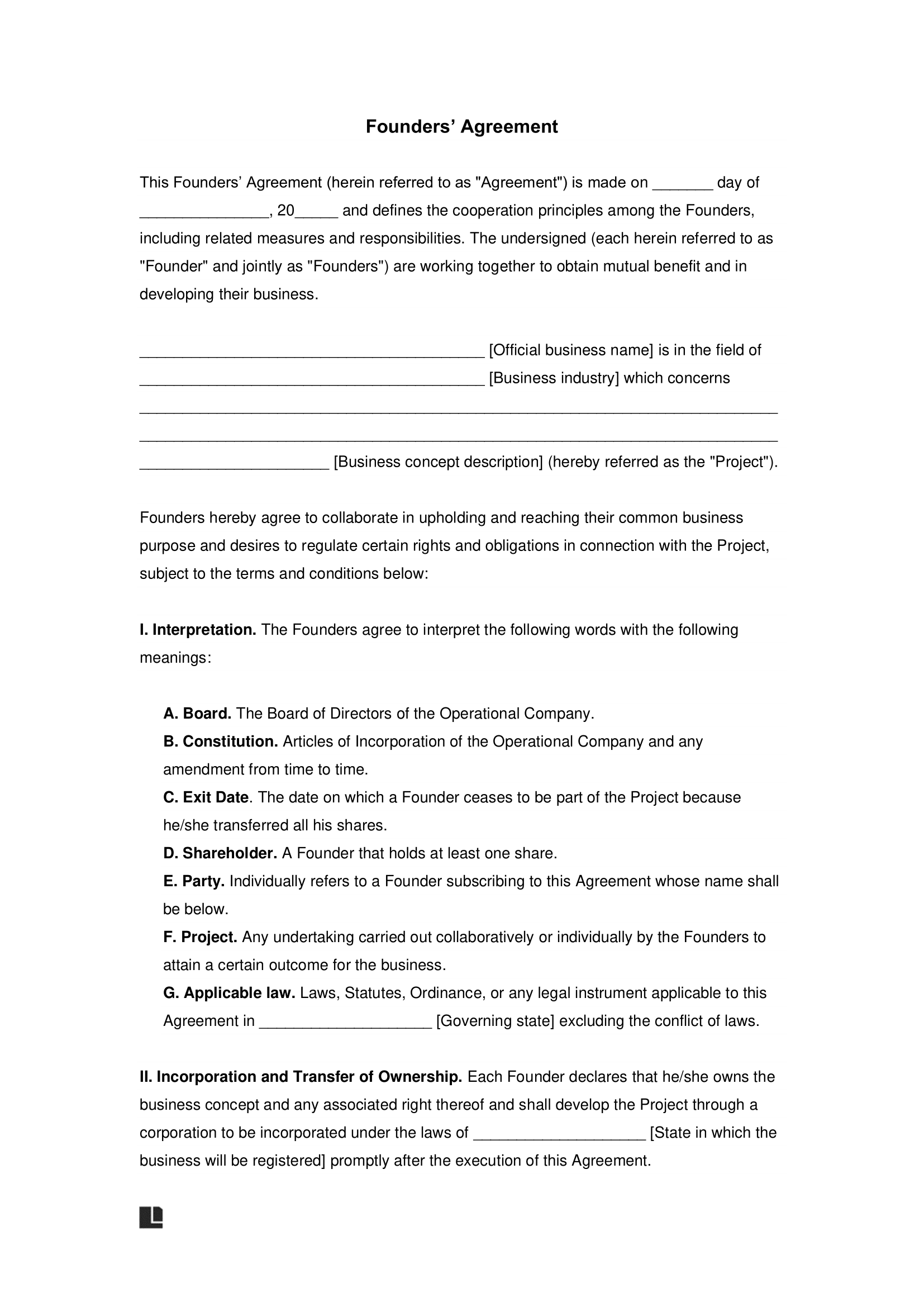What Is a Founders’ Agreement?
A founders’ agreement gives structure to how a startup is formed, managed, and grows. It defines each founder’s ownership stake, daily responsibilities, and role in major decisions. It also outlines what happens if a founder leaves or new investors come on board.
A founder’s agreement also makes sure the company owns all code, designs, or creative work the founders produce. This protection keeps ownership clear and signals to investors that the team handles business with structure and foresight.
The goal is to keep everyone accountable and working toward the same goals. Having an agreement brings structure to the partnership and helps maintain trust as the business grows. It also makes the terms official, since it’s legally binding only for the founders who sign it.
A founder’s agreement is only part of building a startup. You’ll also want to have these key documents in place:
- Mutual NDA to protect early ideas and private details.
- IP assignment agreement to ensure all creations belong to the company.
- Articles of incorporation to make your startup a legal entity.
Together, these documents give your business a strong start.
When to Use a Founders’ Agreement
A founders’ agreement matters most at the very start of a company. When ideas turn into real plans and responsibilities start to form, it keeps everything organized and fair. It’s the document that helps founders move from brainstorming to building. Use a founders’ agreement when:
- Two or more people start building a company together.
- Before operations begin or before pitching to investors.
- Roles or equity are still undecided.
- Founders are developing products, code, or branding before the company is formed.
- Founders live in different states or countries and need to define which laws apply.
- You plan to raise funds and clarify investor rights or stock dilution.
- You want to set terms for future hires, growth, or a founder’s exit.
Drafting it early sets the tone for how decisions get made and how the business will grow. It gives founders a clear framework to work from before the real work begins. And using a startup founders’ agreement template makes it easier to cover every detail from the start.
Avoid Early Founder Conflicts
The early stage is when tensions peak. According to Carta’s 2025 Founder Ownership Report, most co-founder conflicts start before equity and roles are clearly defined.
What to Include in a Founders’ Agreement
A founders’ agreement covers who owns what, how decisions get made, and how to handle equity, IP, and exits as the business grows. Each part works in tandem to protect the company. Here’s what to include and the key questions your founders’ agreement should answer.
1. How Do You Identify the Company?
Start with the essentials. Include the business name, the state of registration, and a short description of what the company does. Don’t rely on verbal agreements. Even seemingly small details like the name, purpose, or registration state can become sources of confusion later if they’re not written down.
2. How Will Founders and Equity Be Divided?
List each founder, their title, and what they contribute, whether it’s cash, property, or time. Decide how ownership is split and put it in writing. Without clear records, misunderstandings about who owns what can surface later, especially when the company starts raising funds or bringing in new investors.
Protect Your Share Early
Founding teams own about 56% after seed and only 36% by Series A. Dilution happens fast, so decide on equity early.
While most teams still go with uneven splits, equal ones are becoming more common. YCombinator advises keeping shares as balanced as possible to keep every founder motivated and committed for the long haul.
3. How Will Vesting Work?
Include a vesting schedule that explains how and when founders earn their shares. This keeps everyone committed and protects the company if someone leaves early.
Most startups use a four-year vesting schedule with a one-year cliff.
4. Who Makes the Big Decisions?
Define who has authority over key decisions and how to handle a tie. Setting these rules early keeps operations running as they should and helps avoid friction between founders. For example, you might agree that the CEO makes final calls on hiring and product direction, while major financial or ownership decisions require everyone’s approval.
Prevent Leadership Deadlock
Early-stage founder splits have nearly doubled since 2015, often because decision rights are not clearly defined.
5. What Happens if a Founder Leaves or Sells?
Explain what happens if a founder leaves or wants to sell their shares. Set clear terms for transfers and buybacks to keep control within the company as investors come in.
6. How Will IP and Competition Be Managed?
Add a non-compete clause to prevent founders from starting a competing business right after leaving. Define ownership of all intellectual property so any product, code, or creative work stays with the company.
7. Which Laws Apply and How Are Disputes Handled?
Pick which state’s laws will govern the agreement. Then decide whether disputes will go to mediation, arbitration, or court. Setting this up early saves time, money, and frustration when issues come up. Since 65% of startups fail due to founder conflict, a clear process for handling disagreements helps keep the business steady when things get tense.
If you’re working together on a short-term project rather than forming a full company, a collaboration agreement may be a better fit. It outlines duties, contributions, and ownership without creating a new business entity.
Founders Agreement Sample
View the sample first to see how it’s structured. Then, customize and download the startup founders agreement template in PDF or Word format to make your own.






